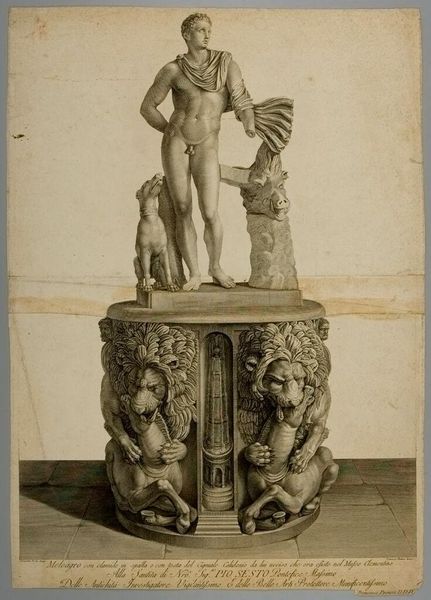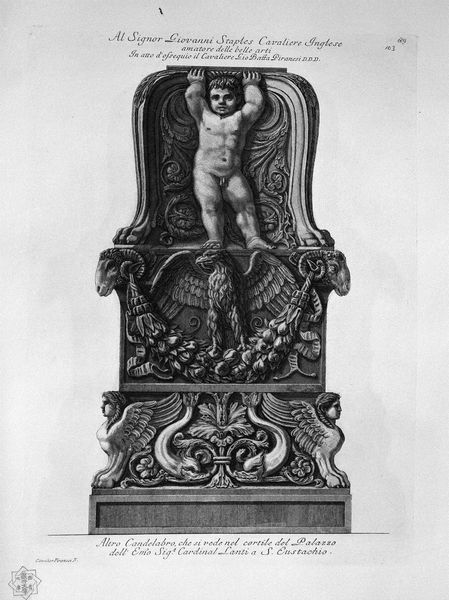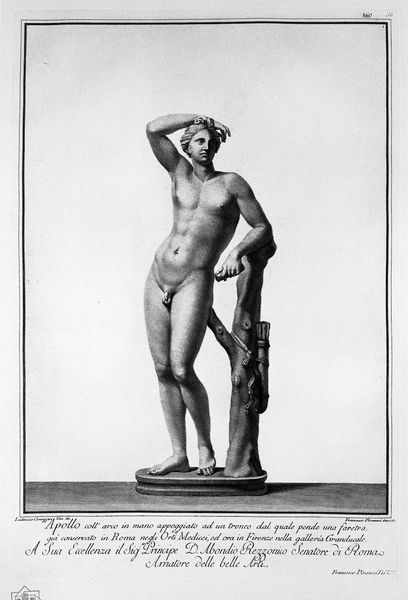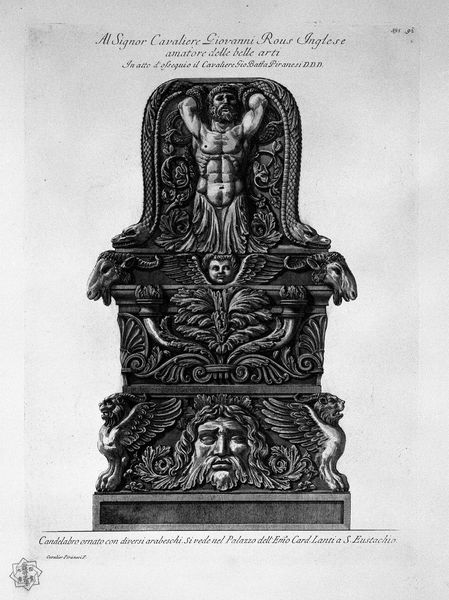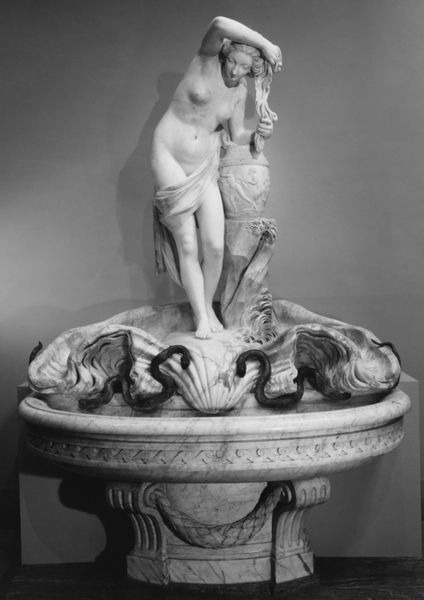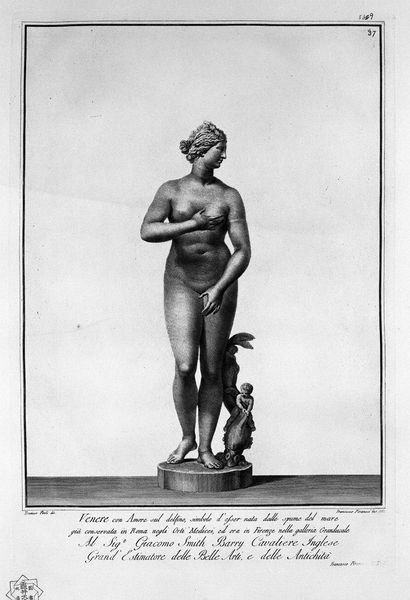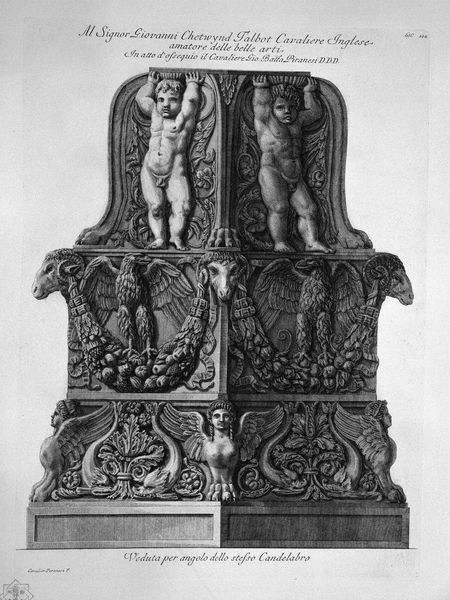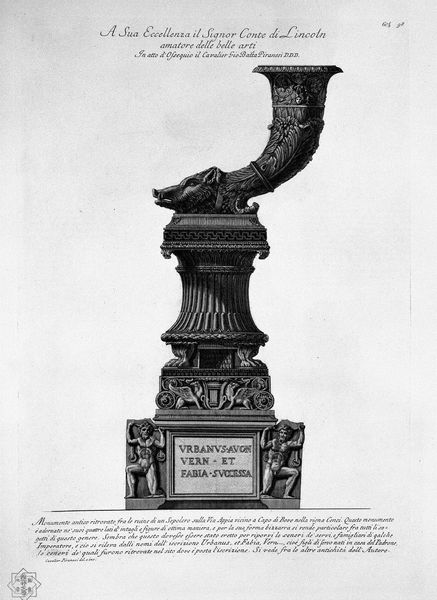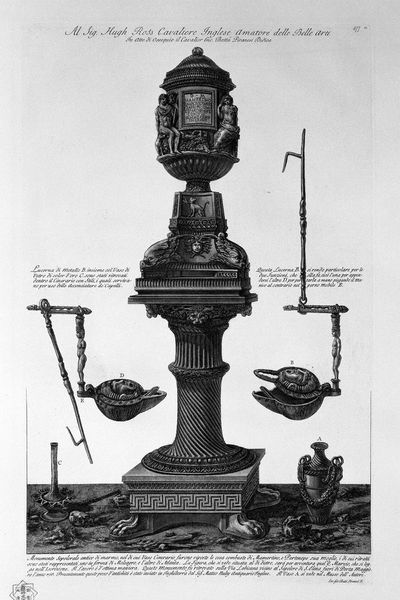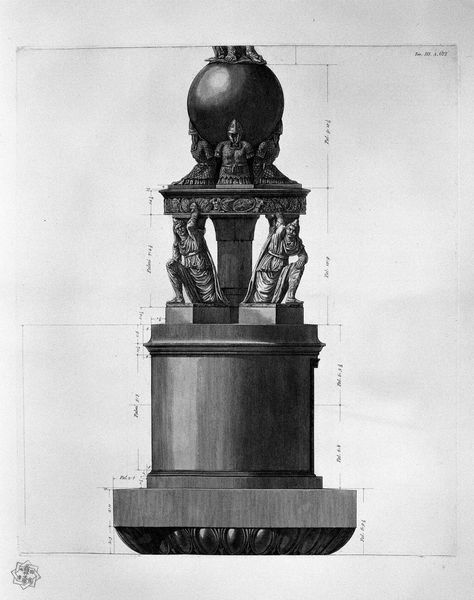
print, sculpture, engraving
#
neoclacissism
# print
#
sculpture
#
greek-and-roman-art
#
figuration
#
sculpture
#
line
#
history-painting
#
engraving
Copyright: Public domain
Curator: This engraving, simply titled "Meleager", is by Giovanni Battista Piranesi. Note the neoclassical lines in the sculpture's depiction. Editor: It's stark, isn’t it? The engraving highlights the strong lines of the statue but it also emphasizes a sense of isolation, a kind of cold grandeur. The stark black and white aesthetic adds to the sense of historical distance, too. Curator: Precisely. Piranesi was fascinated by the visual weight of Rome, the authority and history literally carved into stone. He made many engravings of sculptures like this one as a means of historical record but also to project that authority forward into his own time. Editor: And it definitely succeeds. Look at the almost aggressive masculinity embodied by Meleager. His stance, the details of his physique, it’s a very particular statement about power and ideal form that is reflective of certain social standards and political hierarchies. Is the hunting dog meant to represent the loyalty or control, perhaps both? Curator: Absolutely. Context is key. We have to understand the importance of antiquity to eighteenth-century political thought and social structures. Depictions of figures like Meleager reinforced ideas of heroic leadership, ideals tied to the burgeoning nation-states of Europe. The references to classical ideals helped in legitimizing the authority of patrons like Pope Pius VI, to whom it is dedicated. Editor: It also prompts questions about who has historically had access to these images and who has been excluded. These sculptures were not always neutral aesthetic objects; they carried coded messages. The racial and gender implications are, of course, things we really need to address critically. Curator: Right. The choice to celebrate specific moments from the ancient world or replicate only certain works reinforces biases of taste, creating a narrow view of art history, and perpetuating, in many ways, a cultural hierarchy. Editor: Reflecting on this image allows us to recognize the ways historical and social forces impacted art production, and continue to reverberate today. Curator: It's a poignant reminder of art’s powerful function and influence within a historical framework.
Comments
No comments
Be the first to comment and join the conversation on the ultimate creative platform.

